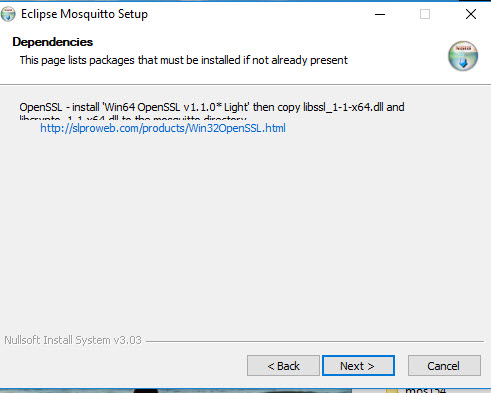

- #INSTALL ECLIPSE PLUGIN MQTT CLIENT INSTALL#
- #INSTALL ECLIPSE PLUGIN MQTT CLIENT CODE#
- #INSTALL ECLIPSE PLUGIN MQTT CLIENT LICENSE#
- #INSTALL ECLIPSE PLUGIN MQTT CLIENT DOWNLOAD#
It must be the last character of a topic subscription.Įach MQTT publish is sent with one of three Quality of Service (QoS) levels. This wildcard can be used more than once in a topic subscription.Ī wildcard that matches any number of levels within a topic. These characters cannot be escaped.Ī wildcard that matches one complete topic level. The wildcard characters are reserved and must not be used in the topic. Wildcards are not allowed in topic names when publishing messages. These wildcards are useful if a client wants to receive messages for different topics with similar structure at once. MQTT Topic Wildcards can be used for topic filters when subscribing to MQTT messages. There is no need for a client to create the desired topic before publishing or subscribing to it, because a broker accepts each valid topic without any prior initialization. In comparison to a message queue, a topic is very lightweight. Each topic level is separated by a forward slash (topic level separator). A topic consists of one or more topic levels.


Typical use cases of MQTT include:Ī topic is a UTF-8 string, which is used by the broker to filter messages for each connected client. MQTT excels in scenarios where reliable message delivery is crucial for an application but a reliable network connection is not necessarily available, e.g. The most recent version of MQTT is 3.1.1, which has many improvements over the first public MQTT release, MQTT 3.1. MQTT utilizes many characteristics of the TCP transport, so the minimum requirement for using MQTT is a working TCP stack, which is now available for even the smallest microcontrollers.
#INSTALL ECLIPSE PLUGIN MQTT CLIENT CODE#
Designed with a minimal protocol overhead, this protocol is a good choice for a variety of Machine-to-Machine (M2M) and Internet of Things applications, especially where a small code footprint is required and/or network bandwidth is at a premium. It is lightweight, open, simple, and easy to implement. Your eclipse is now configured to use Liferay plugins.MQTT is a binary client-server publish/subscribe messaging transport protocol, standardized by OASIS.
#INSTALL ECLIPSE PLUGIN MQTT CLIENT LICENSE#

After pending finish, Select “ Liferay IDE” and press “ Next”.In the Work with field, past this URL : press “ Enter”.
#INSTALL ECLIPSE PLUGIN MQTT CLIENT INSTALL#
If you already have an existing eclipse and want to use it for your Liferay portal development, you need to install the Liferay plugin on Eclipse. You are ready now to begin Liferay Portal development ! 2- Install Liferay plugin on an existing eclipse After the end of the installation, unzip the downloaded archive, open Eclipse by double-clicking on “ eclipse.exe“.Select the “ Eclipse Luna + Liferay IDE2.2.4-GA5” option as shown below and click on “ Download”.Go to the Liferay official site by clicking here.
#INSTALL ECLIPSE PLUGIN MQTT CLIENT DOWNLOAD#
To download it, follow these instructions : Liferay provides a customized eclipse called “Liferay IDE” that contains all the shipping utilities to use Liferay. 1- Liferay IDE, if you don’t have an existing eclipse (recommended) We need to install Liferay plugin on Eclipse. Before we take an interest for Liferay portlets, hook, theme and other Liferay components, we must first setup our work environment by adding some essential plugins on Eclipse.


 0 kommentar(er)
0 kommentar(er)
